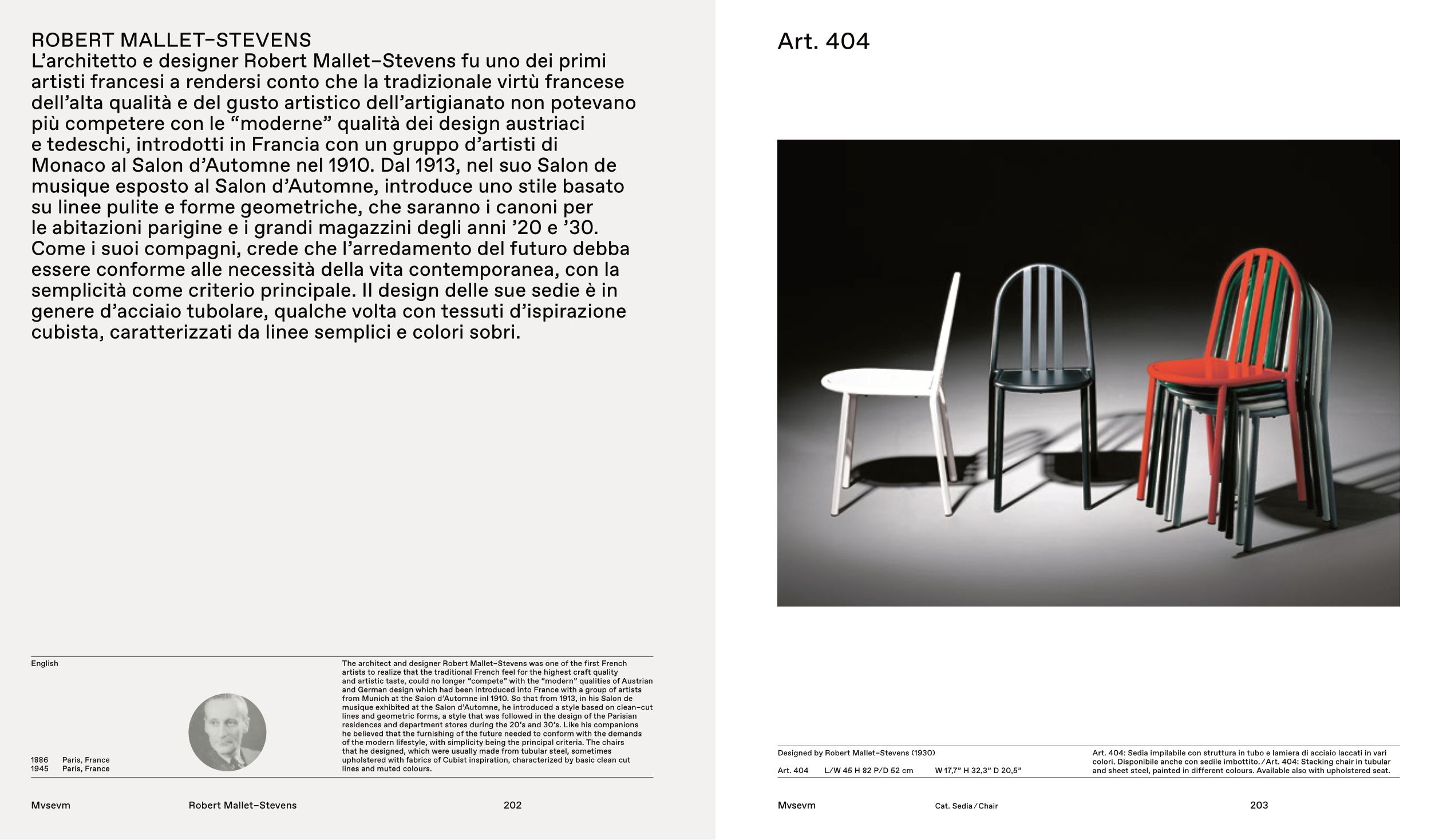202
203
Art. 404
Mvsevm
Cat. Sedia ⁄ Chair
Designed by Robert Mallet–Stevens (1930)
Art. 404
L ⁄ W 45 H 82 P ⁄ D 52 cm
W 17,7” H 32,3” D 20,5”
Art. 404: Sedia impilabile con struttura in tubo e lamiera di acciaio laccati in vari
colori. Disponibile anche con sedile imbottito. ⁄ Art. 404: Stacking chair in tubular
and sheet steel, painted in different colours. Available also with upholstered seat.
ROBERT MALLET–STEVENS
L’architetto e designer Robert Mallet–Stevens fu uno dei primi
artisti francesi a rendersi conto che la tradizionale virtù francese
dell’alta qualità e del gusto artistico dell’artigianato non potevano
più competere con le “moderne” qualità dei design austriaci
e tedeschi, introdotti in Francia con un gruppo d’artisti di
Monaco al Salon d’Automne nel 1910. Dal 1913, nel suo Salon de
musique esposto al Salon d’Automne, introduce uno stile basato
su linee pulite e forme geometriche, che saranno i canoni per
le abitazioni parigine e i grandi magazzini degli anni ’20 e ’30.
Come i suoi compagni, crede che l’arredamento del futuro debba
essere conforme alle necessità della vita contemporanea, con la
semplicità come criterio principale. Il design delle sue sedie è in
genere d’acciaio tubolare, qualche volta con tessuti d’ispirazione
cubista, caratterizzati da linee semplici e colori sobri.
Mvsevm
Robert Mallet–Stevens
The architect and designer Robert Mallet–Stevens was one of the first French
artists to realize that the traditional French feel for the highest craft quality
and artistic taste, could no longer “compete” with the “modern” qualities of Austrian
and German design which had been introduced into France with a group of artists
from Munich at the Salon d’Automne inl 1910. So that from 1913, in his Salon de
musique exhibited at the Salon d’Automne, he introduced a style based on clean–cut
lines and geometric forms, a style that was followed in the design of the Parisian
residences and department stores during the 20’s and 30’s. Like his companions
he believed that the furnishing of the future needed to conform with the demands
of the modern lifestyle, with simplicity being the principal criteria. The chairs
that he designed, which were usually made from tubular steel, sometimes
upholstered with fabrics of Cubist inspiration, characterized by basic clean cut
lines and muted colours.
1886
Paris, France
1945
Paris, France
English


